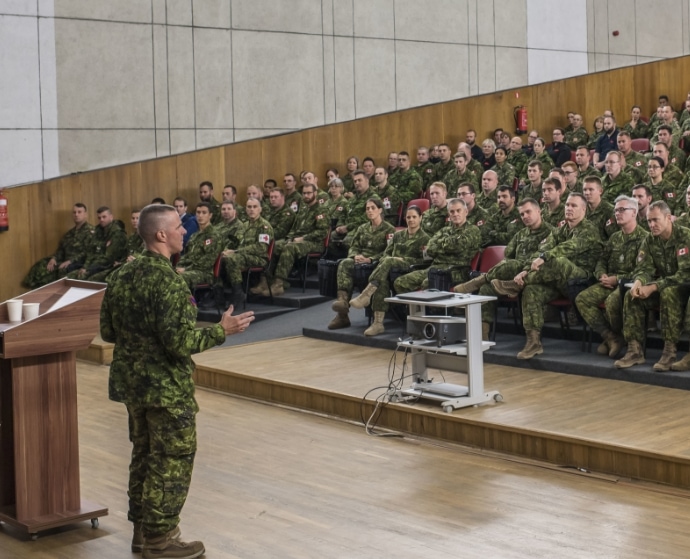Our history
The Conference of Defence Associations
came into being with the adoption of its constitution on 18 November 1932. Under this name, annual meetings would be held of representatives from the several Militia and Non-Permanent Forces’ Associations that made up the membership of CDA; membership was not open to any of the Permanent Force. Significantly, the Associations themselves were the members of the new body, not the individual delegates, with each Association having one vote. This arrangement assured the autonomy of the Associations themselves as well as guaranteed equality as some were allowed more delegates than others based on their size. The conferences would allow for the first time DND to meet the responsible officers of the Non-Permanent organizations and have Confidential discussions, an interesting side effect of which was that this impeded CDA and its Associations’ capacity to speak publicly on these matters.
At the time of its creation, the Defence Minister felt that CDA could fill the gap of coordinating the concerns of the Associations. This central body would present the senior officials of the defence department, and the government as required, with their recommendations on military matters. This was timely as the Chief of the General Staff at the time, MGen McNaughton, was trying to accomplish a reorganization that affected the Non-Permanent Forces. The gambit was successful as the plans presented in 1932 were accepted by CDA. A resolution was adopted advocating the change despite its adverse impact to some groups because, overall, the argument was that reorganization put the Militia and the Non-Permanent Forces on a more professional footing.
Although Associations from all three Services were present at the initial meeting where CDA was formed, it would be over thirty years later before a non-Army association applied for membership. And only in the 1970s was CDA opened to the Regular Force, both groups having discovered the mutual advantages to be gained from close cooperation within the CDA framework. These timeframes are in keeping with the historical context of CDA’s formation, which did not occur until 1932 despite a central body being advocated at both the 1911 and 1913 Militia Conferences when it was recognized that such a body could be of “infinite service” to the Minister. The added benefit was the Associations’ ability to bring civilians in touch with military affairs.


An indifferent public to Defence was an early concern. From the beginning, it was believed that if the Canadian public could be educated on the issues and threats to national defence and security, their support would result in more governmental funding towards defence requirements. From this also arose the idea that a Parliamentary Standing Committee on National Defence was needed. Although it was not pursued after being raised at the inaugural meeting, the desire for such a committee was discussed again in February of 1936. By August of that same year, a sub-committee of the cabinet to be called “The Canadian Defence Committee” established to consider problems respecting Defence.
Ultimately, CDA was founded to improve the military position and to enhance the capability of the country to respond when needed, pursued through three lenses: strategic, tactical, and honours and awards. Typically, concerns brought by the Associations for CDA to examine were multi-association interests or single-association interests rebuffed by the NDHQ staff. With the inclusion of the Regular Force, CDA also became a channel for subjects that either could not be raised by the Regular Force or for which it had already received negative replies. CDA took on the responsibility of ensuring that the Department and the government of the day were aware of the significant defence issues and the measures which had to be taken to guarantee Canada the best defence possible. That mandate has remained intact to this day.
